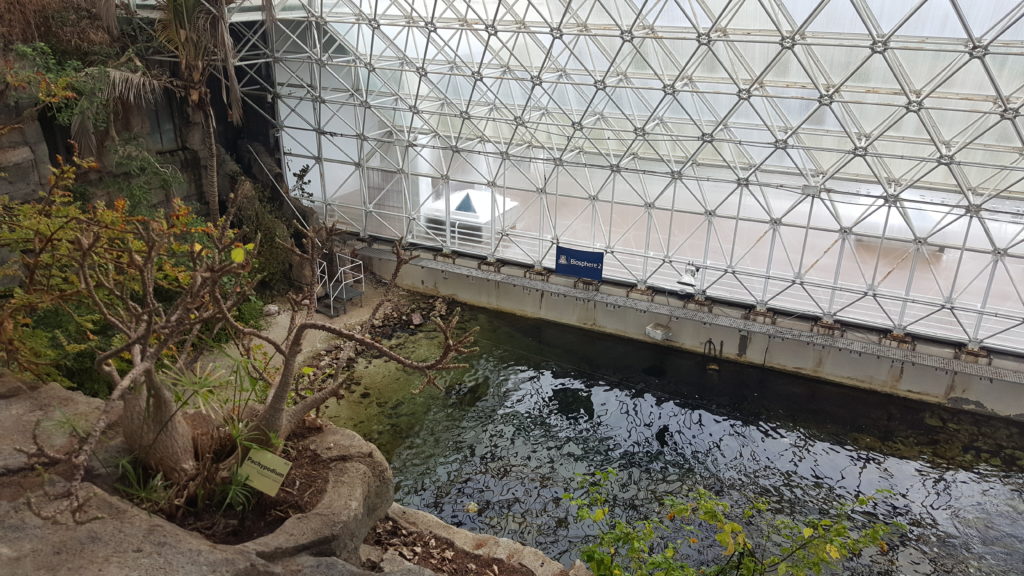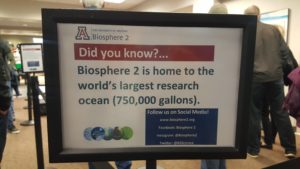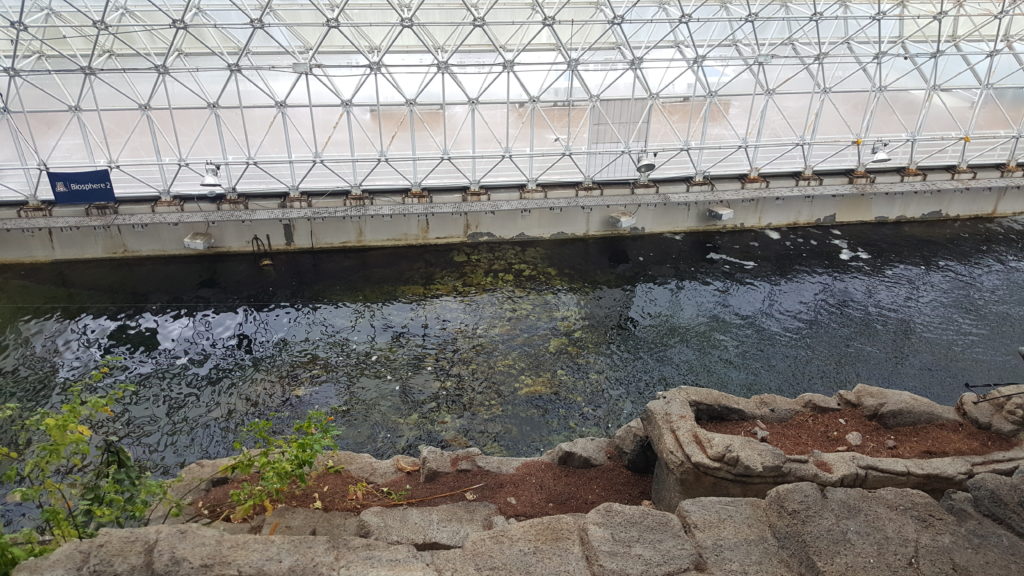
Image by Marie Zhuikov, Wisconsin Sea Grant.
Quick – where is the world’s largest research ocean located?
If you answered that it’s in the middle of the desert in the American Southwest, you are right!

Image by Marie Zhuikov, Wisconsin Sea Grant.
I was able to visit this artificial ocean in February before travel restrictions were imposed due to COVID-19. I found it inside Biosphere 2, a self-enclosed science station run by the University of Arizona near Tucson.
Designed to simulate a Caribbean reef, the 750,000-gallon marine mesocosm is enclosed in a large tank with a maximum depth of seven meters. It slopes to a shallow lagoon, partially separated by a reef. There’s even an artificial wave generator that mimics the movement found in real reef environments.
Unfortunately, the ocean has not fared well over the years. A research project into ocean acidification by Columbia University, which used to own Biosphere 2, killed off the coral. After a period of neglect when the facility changed hands, algae took over the system and most of the fish perished.

The research ocean at Biosphere 2. Remnants of the coral reef are vertical across the middle. Image by Marie Zhuikov, Wisconsin Sea Grant.
Hmm, this sounds eerily similar to the fate of many of my home aquariums! During my visit, I was able to view the ocean from above. If I had arrived at the facility earlier in the day before tickets were sold out, I could have purchased an ocean tour, which allows people to climb down to the “beach” area on the ocean shore. (Note that the facility is currently closed to public tours and activities.)
However, now the University of Arizona is in the process of revitalizing the ocean to create a coral reef tank solely dedicated for research purposes. They are cleaning out the algae and making the ocean more hospitable for fish and other fauna – with the goal of building a reef that’s resilient to changes in climate.
With the crisis our real oceans are facing with acidification and coral bleaching, this research is especially needed. For more information, visit the ocean page on the Biosphere 2 site.

Biosphere 2. Image by Marie Zhuikov, Wisconsin Sea Grant.


